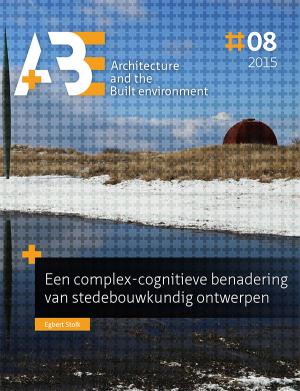Hosted by
Een complex-cognitieve benadering van stedebouwkundig ontwerpen
Synopsis
This dissertation investigates: How urban design can be described as a collective cognitive activity in a complex living environment; How urban designers move across scales in their search for coherence; How urban designers, while moving across scales, can be subject to a variety of misconceptions and biases; How isovists and patterns can be used as design instruments to mitigate the negative effects of these misconceptions and biases; And, how urban design practice, and the concept of spatial quality in the province of North-Holland in particular, can be understood on the basis of the proposed theoretical framework.
The research method applied is transdisciplinary. It employs knowledge from cognitive science, complexity science, design sciences and urban design to build up a theoretical framework and a conceptual model. Parallel to this, two design instruments were developed and applied, and a case study was conducted.
The goal of the research is:
To develop a conceptual model of urban design, in which the dynamics of the design process and the dynamics of the living environment are interrelated, by which the role and position of urban design and the concept of spatial quality can be denoted scientifically.
Part A. Theoretical framework and conceptual model
In the theoretical framework and the conceptual model a distinction is made between designing as a complex system and the living environment as a complex system, and the relation between the two.
The first part builds upon insight from the design sciences by relating them to the notion of Synergetic Inter-Representation Networks (SIRN, Haken & Portugali, 1996; Portugali, 1996) and Construal Level Theory (CLT, Trope & Liberman, 2010).
On the basis of SIRN, the interaction between internal representations (in our mind/brain) and external representations (in the environment) can be described. To this existing approach, a variety of design-related elements are added, considering designing as mental time travel, as looking for coherence, and the relation between individual, group and collective design processes. This has led to the SIRN+design model, a hypothetical-descriptive model of designing.
On the basis of CLT, the movement between abstract and concrete information can be described. A distinction can be made between the different dimensions. From this perspective, the design sciences are examined, and several interrelated dimensions are identified: position in time, position in space, social distance, analogical distance, familiarity, and hypotheticality. Hereby, designing across scales can be described. Based on this CLT-design model, the difference between cognitive planning and cognitive designing, and the difference between analytical and creative tasks are set out.
The second part builds upon complexity theories of the living environment (Portugali, Meyer, Stolk, and & Tan 2012). This living environment is not only described as a doubly complex system (Portugali, 2011) but also as Complex Adaptive Prospective System (CAPS).
Herein, the dynamics of the living environment is not only described from the necessity to anticipate to changing conditions, but also on the basis of the capacity of humans to hold images of the future, act, and design accordingly. This establishes the relation between the dynamics of the living environment and the (collective) design process.
On this basis, a specific type of professional design is addressed: urban design (stedebouw). A number of specific characteristics of urban design are explored. This discipline focuses on collective, large-scale and complex design processes and artifacts. Hereby, urban designers move on fairly large distances across scales, making them susceptible to different potential misconceptions and biases.
Part B. Design tools and case study
In addition, two design tools were developed and applied, and a case study was conducted. The first design tool is developed to mitigate the negative effects of the airplane-perspective-bias. Isovist-Based Visibility Analysis (IBVA) is a framework for the analysis of three-dimensional isovists, developed in collaboration with Arthur van Bilsen (Van Bilsen & Stolk, 2007). On the basis of IBVA, the visual space can be calculated on a large number of points. The resulting visual fields provide an insight into the three-dimensional space on a large scale in the flat plane.
The second design tool builds upon the pattern language by Christopher Alexander (1977). It is proposed to structure the patterns based on the Form-Operation-Performance model (Tzonis, 1992; Guney, 2007) and to describe them based on the different CLT-dimensions. On the basis of the patterns, the negative effects of several potential misconceptions and biases, related to the cognitive activity of designing and the complexity of the living environment, can be reduced.
The case Spatial quality in the province or North-Holland has been developed parallel to the development of the SIRN+CLT design model. This case illustrates how by using the model, implicit processes can be described, and how the concept of spatial quality is used in practice. The research has focused on the North Holland Strategic plan (Structuurvisie), the different instruments to improve the spatial quality, and the role of the province as a co-designer of spatial quality.
It can be concluded that the scientific interpretation of urban design, based on the developed complex cognitive (SIRN + CLT) model, provides insight into the activities, position and context of urbanism. With this conclusion, the objective of this thesis is realized. From the discussion follow several observations that are highlighted for further research. The parts of the conceptual model can be developed and integrated further. This can provide a basis for developing a theory of urban design practice.

